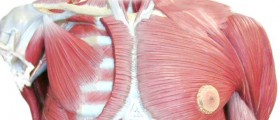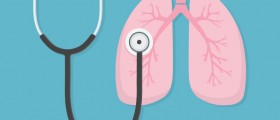
Before learning what are the first signs of ALS it is better to explain what ALS actually is. ALS stands for Amyotrophic Lateral Sclerosis, a disease colloquially referred to as Lou Gehrig’s disease, for the famous baseball player who suffered for it. It is a neurological disorder which affects motor neurons, responsible for voluntary movement.
In ALS, the nerve cells in the central nervous system degenerate progressively and the disease is, unfortunately, always fatal. Motor neurons that control limb movement stop functioning properly, which leads to muscle weakness that progresses to atrophy. ALS eventually leads to complete loss of movement control, but cognitive abilities, as well as eyes and other sensory organs generally remain normal.
The exact cause of ALS is not yet known. Experts cannot agree whether the cause is a virus, exposure to toxins or brain trauma.
First signs and symptoms of ALS
Initially, the symptoms of ALS are very subtle and they easily go unnoticed. The list of early symptoms is difficult to compile because they differ from one person to another. Not only that, in the beginning the symptoms resemble those of other neurological disorders, which often leads to misdiagnosis.
However, it is safe to say that the early signs and symptoms of ALS will include muscle weakness in legs, arms or both, slurred speech or nasal speech, periods of uncontrollable laughter or crying, stiff limbs, frequent cramps in limbs and twitching in hands or feet.
One of the symptoms may also be the so-called Babinski’s sign, when the big toe is flexed upwards and the other toes flex outward. Babinski’s sign, however, may indicate other conditions involving upper motor neuron impairment.
The symptoms mentioned above can appear individually or combined. They may also be accompanied by dropping things, stumbling or tripping and falling. As time goes by, a person suffering from ALS may experience difficulties performing the simple everyday tasks like buttoning the shirt. Eventually, the symptoms will progress and become more severe, involving muscle weakness and eventually paralysis.
These were the early symptoms of ALS. A person who received this diagnosis will, unfortunately, experience the aggravation of symptoms, from difficulty and inability to speak, difficulty chewing and swallowing, muscle weakness resulting in paralysis and difficulty breathing that eventually requires ventilator support.
The cure for ALS is yet to be discovered. The treatment used today aims to alleviate the symptoms and to prevent further damage to the motor neurons. The medications are also prescribed to improve the quality of life by reducing the involuntary spasms, pain, fatigue and depression.











-And-Breathing-Problems_f_280x120.jpg)




Your thoughts on this
Loading...